An special Feria in the South of Spain
Monday, June 30, 2014
I have said “An special feria…”, because we, who were born in Algeciras, are named “Special people”.
The last days, from 21 to 28 of June, has been celebrated “The Feria of Algeciras” (in the province of Cadiz).
Now, I am going to explain you the main parts of the Feria.
First, the Council asks some painter, from Algeciras or near, to create a poster, to advertise the forthcoming Fair.
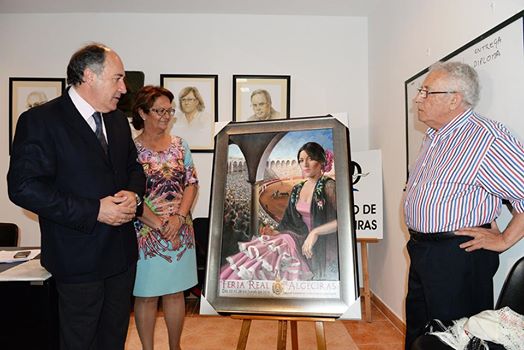
The Major, Jose Ignacio Landaluce, in the presentation of the poster about the Fair of Algeciras 2014, by Maria de los Angeles Arias Bernal
At the same time, they start to choose the young Queen and Ladies of Honor of the Fair. This year, the Queen was named Irene Mata. And her Ladies of Honor were: Macarena de los Reyes, Patricia Jimenez, Laura Rubio, Irene Gomez, Fanny Estevez, Irene King, Luz Maria Rodriguez and Helia Garcia.
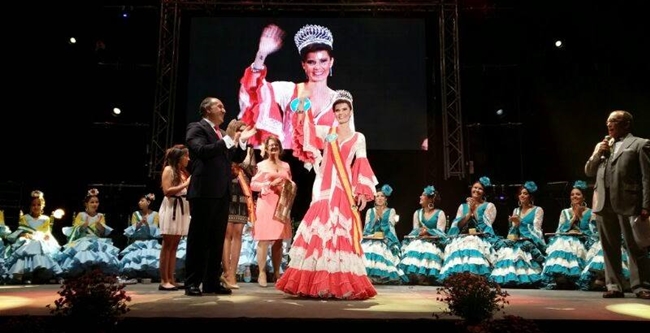
Irene Mata (the young Queen) with her Ladies of Honor
They also choose the Child Queen and her Ladies of Honor. This year, the Queen has been: Paola Rivera. And her Ladies were: Carmen Fernandez, Natalia Virués, Mireya Acedo, Safa Aqdi el Morabet, Paula Arranz, Lucía Torrejón, Irene Cabrera and Silvana Guerrero.
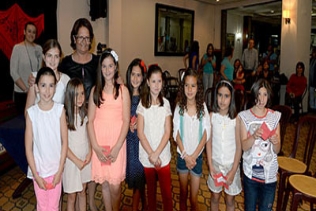
The Chil Queen and her Ladies of Honor
Another very important part of the Fair, for women, is the regional costume, named “Traje de gitana” or “Traje de Flamenca” or “Traje de Faralaes”. It is usually a long dress; but, this year, I have seen some shorts.

Regional costumes (Trajes de gitana or Traje de Faralaes)
Another typical thing is the Lantern Fair (Farolillo), to decorate the stand, where dancing Flamenco, or even the streets in the Fair.
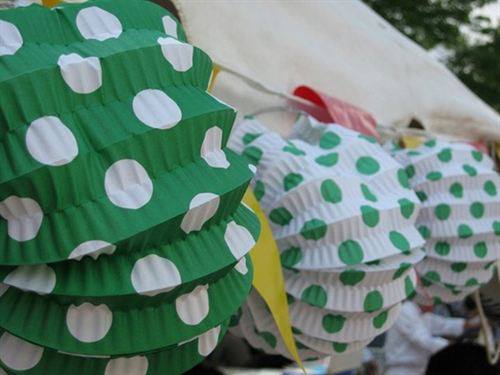
Farolillos made of paper

A street with farolillos
Some days before starts the Fair, it is celebrated the named “Pregón”, where a known character in Algeciras talks about our town. This year the “Pregón” has been given by Juan Carlos Chavez.
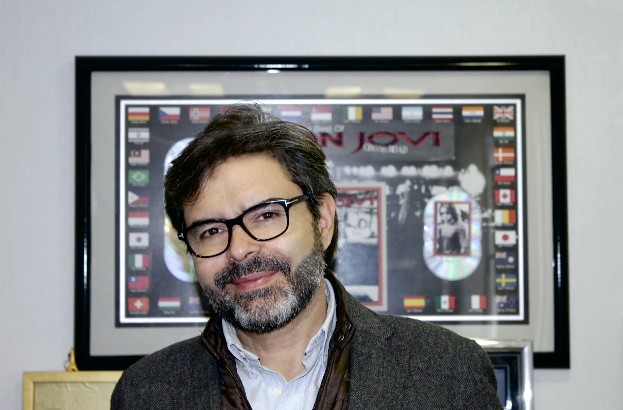
Juan Carlos Chavez
You go to the Fair in the morning.
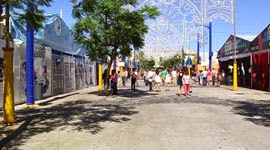
Some stands in the morning
If you go in the morning or in the night, you can eat in a “Caseta” (stand) and you can ask some plates, as you can see in this picture:
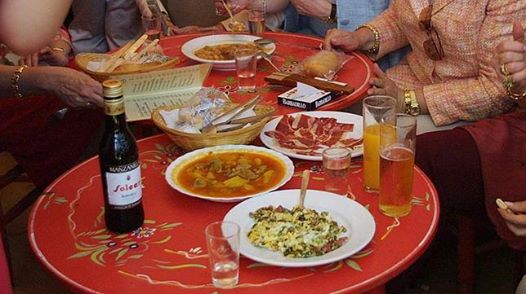
Some plates of dish into a stand
And then, you can dance Flamenco:
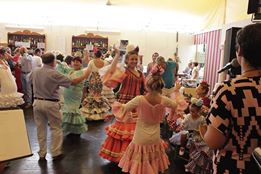
But if you prefer to go at night, you will find a very large door (Fachada = Façade):
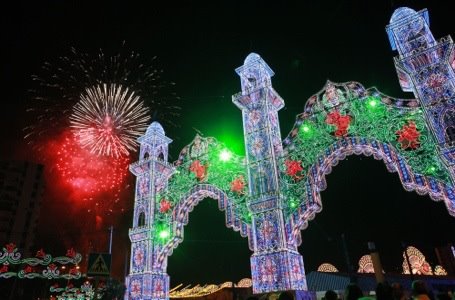
The Façade this year
And if you go up to the Fair, you will have this view:
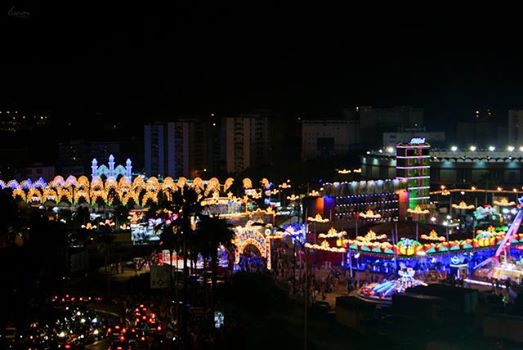
This is what I did, the last Saturday night, when the Fair was finishing, in order to see better the named “Fuegos artificiales” (Fireworks):
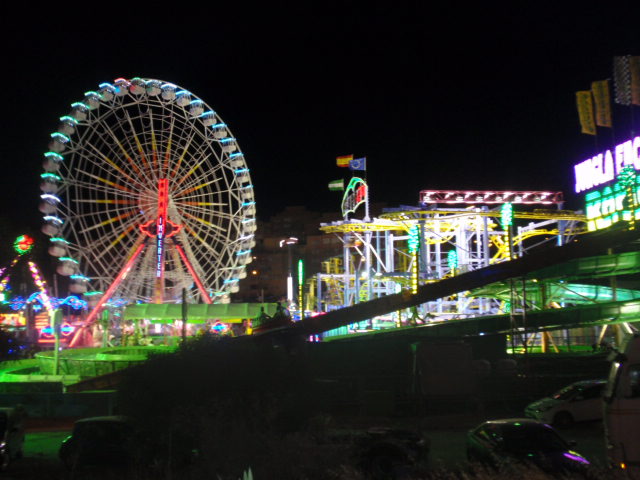

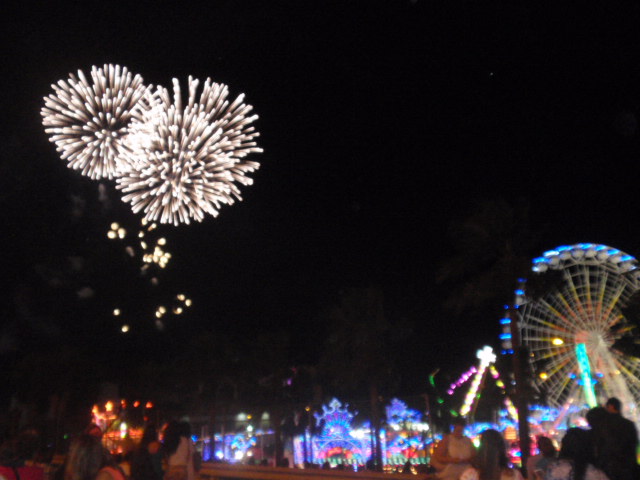
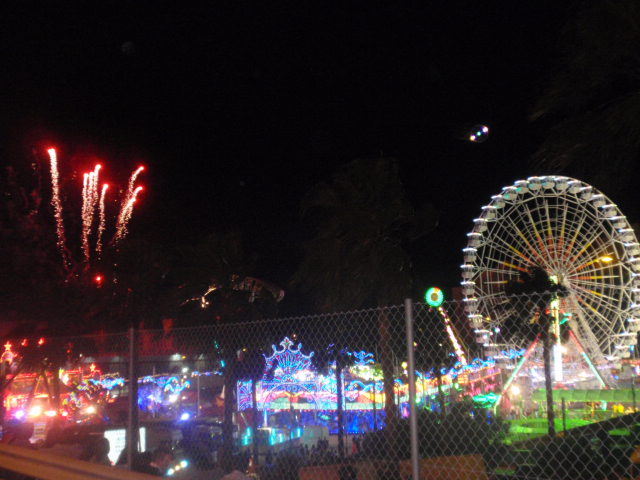

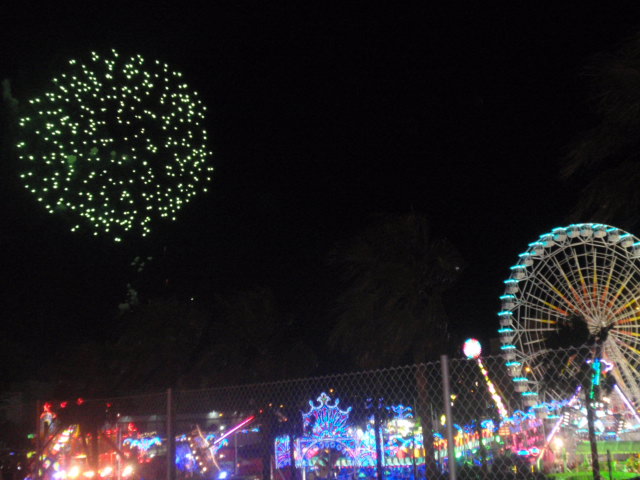

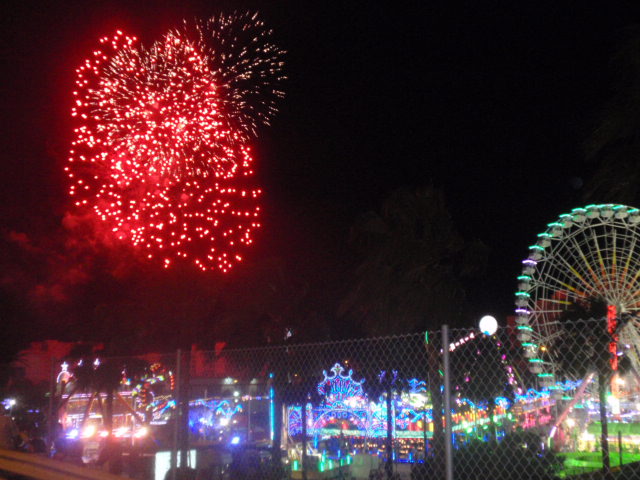

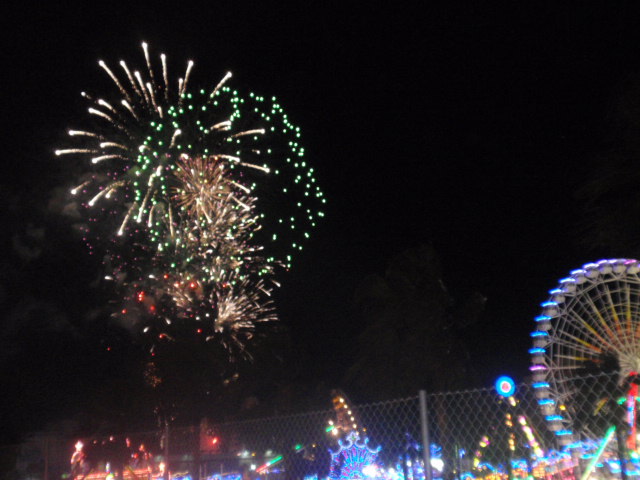
Well, I hope that you can come next year, to enjoy this Fair.
Till soon, kind regards,
Luis.
Sponsored by Costaluz Lawyers.
Please click here below:

 0
Like
Published at 7:45 PM Comments (0)
0
Like
Published at 7:45 PM Comments (0)
First hydro-wind power Plant in Spain and Worldwide
Saturday, June 28, 2014
El Hierro island is the smallest --but with the highest mountains-- of the Canary Islands (South Western Spain) and it has almost 11,000 inhabitants.
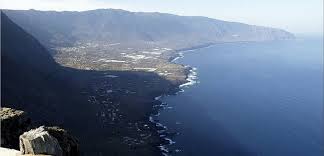
El Hierro island (Canary Islands, South western Spain)
El Hierro always wanted to be a very natural island and now it seems that it will get, because it is already the first island in the world, which has a Central Hydro-wind and that means this island will not need to depend on oil ever.
The island of El Hierro has taken a giant step on the path, that has decided to take to become an island capable of self-sufficient in energy without dependence on oil and other fossil fuels. Yesterday, it has opened the hydro-wind power “Gorona of the Wind”, which become, the smallest and youngest of the Canary Islands, in the first in the world to generate their electricity with renewable energy.
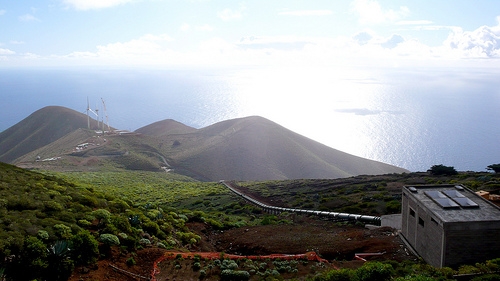
Hydro-Wind Plant in El Hierro
This advancement of engineering has some magic. Same as Garoé --a sacred tree, to the Aboriginal islanders, whose leaves caught the fog-water--, the hydro-wind plant of El Hierro will distil deionized water drops and light thanks to the combination of wind and water, with its hydroelectric plant and its five wind turbines.
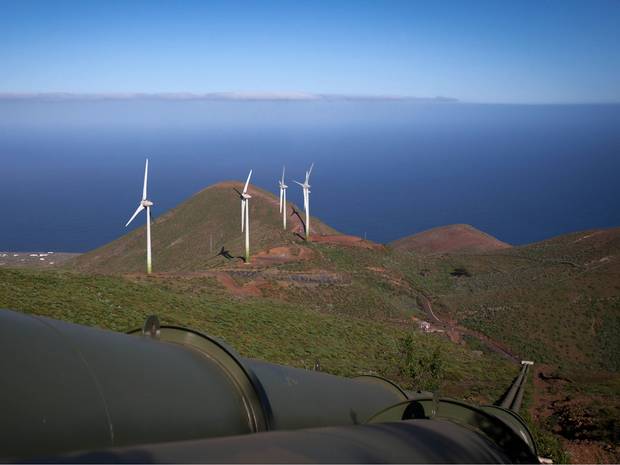
Water pipes and wind turbines in El Hierro
But that El Hierro Island is the first self-sufficient in electricity, in the world, will occur gradually and not of the overnight.
At the end of the year, it is estimated to provide among 70 and 80% of electricity to the grid.
The power plant of the “Gorona of the wind” will replace the previous diesel power plant on the island. The ingenuity, that has been devised, is as simple as generating electricity through two simultaneous sources of supply: wind and water.
The main element is a plant with two water tanks connected by a pipe 6,000 meters and, the second one, a wind park with five wind turbines, interconnected with the existing electrical system, owned by ENDESA.
.jpg) .jpg)
Water pipes from the The five wind turbines.
upper reservoir the lower
one.
Seawater is collected, desalted and reaches the first reservoir (upper one). From there it is released to the second pool (lower one), to generate electricity, like the waterfall in a hydraulic power plant.
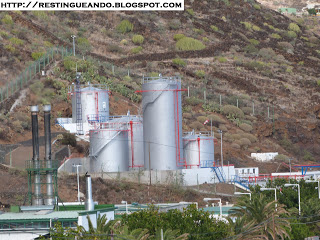
Purifying saltwater
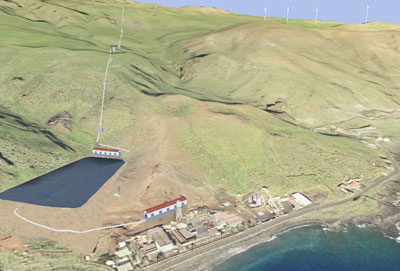
A drawing about the Purifying saltwater and the lower reservoir

A picture of the Purifying saltwater

The lower reservoir
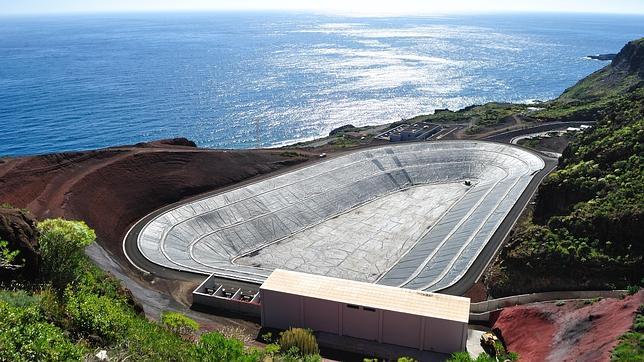
The lower reservoir empty
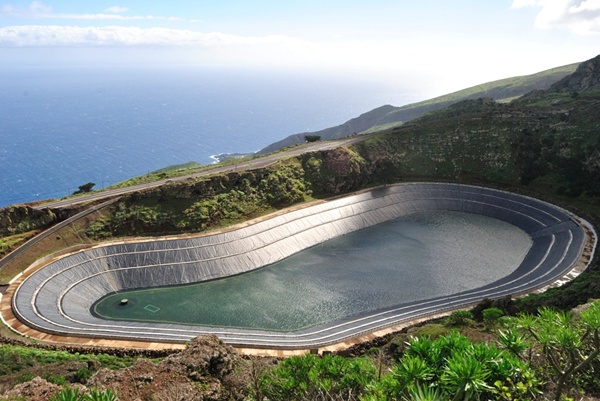
The upper reservoir
.jpg)
How works the Hydro-wind power Plant
The construction of the plant has also experienced its vicissitudes, including the discovery of an archaeological site, La Restinga earthquakes or the two years, that it took to bring, in boat and truck, 6,000 meters of pipe and 55,000 kilos of iron.
The ambitious project has been 82 million euros and it is promoted by Gorona of the Wind, owned by the Inter-island Council of El Hierro (60%), Endesa (30%) and the Technological Institute of the Canary Islands (10%).
Water is a scarce commodity, around the Canary Islands and, in the case of El Hierro, its absence has forced emigration several generations.
It has always been a constant search for the islanders: first with the tree Garoé of the old bimbaches and, then, through the prayers to the Virgin of the Kings. In this century, the technological Garoé of the hydro-wind plant will distil deionized water and light too.
The management of water resources in El Hierro, desalination and distribution consumes nearly 50% of the annual energy demand, a sign of the close dependency among water and energy.
In some completely dependent on foreign and isolated places, --Ptolemy placed the prime meridian on El Hierro, ie, the "end of the world" in ancient times--, water and energy are essential to the survival of the community, its culture and traditions.
But the miracle of the technological Garoé does not stop here. El Hierro aims to be completely self-sufficient when they replace gasoline of cars and installing solar panels for heating. Thus, it may be the first territory, in the world, to isolated self-sufficient with renewable, a world reference in sustainability.
The Canary political forces are thus completed a journey, that began 20 years ago, on an island, where the electrification did not arrive until 1979 and roads were scarce. The first economic items arrived in 2000, and the project developers had to fight for it, against successive central governments.
The plant provides a source of revenue for the council: two million per year, the collection provided by the energy it provides pouring to grid. To this is added 1.8 million, by the savings on its energy bill, by not having to import fossil fuels.
“Now, holding a "vanguard" in the fight against climate change and be a leader in the field of energy and sustainable tourism”, as the president of the Council of El Hierro, Alpidio Armas, has said. In fact, the islands of our planet, more than 100,000, are a "lighthouse" to renewable energy transition, has been defended, these days, at a forum, held in the Canary island, where they have reviewed several real success stories.
Cause the conditions of energy dependence and environmental quality, they are (all the islands in the world) also some "experimental laboratories", for the introduction and development of clean energy, to benefit the 600 million people who live in them.
Well, I hope that you have liked this post and you come to El Hierro, as soon as you can.
Till soon, kind regards,
Luis.
Sponsored by Costaluz Lawyers.
Please click here below:

 0
Like
Published at 5:59 PM Comments (0)
0
Like
Published at 5:59 PM Comments (0)
A Spanish chef patent frozen fried egg
Friday, June 27, 2014
Yesterday, I saw in Internet a curious news: “A Spanish chef could patent a frozen fried egg”. It seemed impossible to do, but he got it.

After 6,000 fried eggs, 16 months of testing and a lot of trial and error, the Style Food Company has achieved its target patent: a frozen fried egg. Its owner, the Basque chef, Javier Yzuel, has been excited in the program “Esto me suena.Las tardes del ciudadano García”.
"We thought we were focused, we had to find ways and we succeeded". The result is a deep-frozen fried egg, with all health and prepared within a few minutes, preferably with steam.
The idea arose in his restaurant, in Vitoria, where they do 300 fried eggs every weekend. "There was no way to get an egg like another", he says. Since the 50's, they have been working on the patent of this product, but had so far failed. "I think if you believe, you must be immovable to discouragement, although you find many people on the road, who put you off", he sentences.
When Javier Yzuel began to work in a professional kitchen factory, he was proposed his self, as the first challenge, to make it a reality. Together with his team, first he managed to make a homogeneous product. After, deep-freezing was achieved, a difficult task because each part of the egg has different processes. Then, you need to thaw and regenerate it, so you can eat it. And in addition, it must have health guarantee. "I think that is going is that we have solved the egg contamination by salmonella", he confirms.
This frozen egg is not raised for domestic consumption, but for all the people who have to eat outside: hospitals, schools, hamburger chains, boats, trains, buses ... For that sector, this solution does not exist. And Javier says that it is having a good reception.
"We will not compete with the homemade fried egg, because that is a pillar of the Mediterranean culture and cuisine. We propose a fried egg with the yolk almost liquid, buttery yolk ...". And the most importantly is that it taste what it has to taste, to fried egg. By the way of it, you have seen, on the picture that I put up, a typical Spanish ham, beside the fried egg.
Well, I hope that you have liked this news.
Till soon, kind regards,
Luis.
Sponsored by Costaluz Lawyers.
Please click here below:

 0
Like
Published at 11:34 AM Comments (0)
0
Like
Published at 11:34 AM Comments (0)
A new Concept of Senior Residence in Spain
Thursday, June 26, 2014
Since a long time ago, I thought that I did not like the known Residences in Spain. I thought that they seemed “a place to park our elders” and I felt pity.
Yesterday I took a joy, when I saw on television, a news saying that a year ago, a group of seniors --and friends among them-- live in some apartments complex, but private apartments with common areas. And, there, they are very happy. This complex have been created by themselves, with their savings, forming a Cooperative called TRABENSOL. It is the first time a project is done, like this, in Spain, and I have found it great.
If you want to know more about it, please click here below to watch a video:
http://www.youtube.com/watch?v=t4GuT0TRJ8s
Marta Cáceres: “Have you ever thought about how and where you would like to spend the last stage of your life?. Well, today we have noticed that, if you could build that place, what structure would it have, what kind of amenities. That is what has made a group of over 100 people, who set out not to be a burden to anyone and enjoy a full stage of activity. They formed a Cooperative and, what they looked like a dream, it is a reality. Do you want to know how is this little paradise?, Go ahead, see”.
Raúl de Andrés (Voice in off): “A garden, in which to plant tomatoes without bending, even from a wheelchair; greenhouse, library, video library and workshop activities ....; therapeutic bath, hairdresser and massage parlor ...; common facilities, not to have to cook or wash clothes and, in turn, own apartment, for a total independence .... Welcome to the Social Center Coexistence, Assistance and Senior Services TRABENSOL”.
Felisa Láiz (a member of the Cooperative of Trabensol): “We intend to have all the necessary spaces for an active life; ie, that aging will coming, but it is as successful as possible, we can be the happiest possible; not only do not make war on the children or the own society, but, in addition, we feel satisfied and reconciled, a little, with this stage of life so difficult, that is old age”
Raúl de Andrés: “Are already a few weeks, to inaugurate this Center, located in the town of Torremocha del Jarama, about 60 kilometers from Madrid ..... It is a dream come true, of a group of workers, united by a common cause”
Antonio Zugasti (Founder of Trabensol): “We believe that problems are best solved by cooperating than competing .....; cooperation, the joint is what allows us to address problems, that we could not solve individually ... and we apply that to the solution of this problem, in our last stage of life”.
Raúl de Andres: “The Cooperative is called TRABENSOL -- acronym for workers in solidarity (TRABAJADORESENSOLIDARIDAD = WORKERS IN SOLIDARITY). Collect one heretogeneous group of people with a shared illusion”
Alvaro Moreno (Team Block Architects): “The most interesting for us, as a study, was to transform the dream of a client, a group of people on a project Architecture ..; transform a vital program in functional programs, spaces, light, communications, relationships; I mean, encourage Architecture, basically, fulfill its expectations, with expectations of a new way of living together their old age”
Raúl de Andrés: “The building is designed in a series of privacy gradations: from the outer square --open to all the residents of the village-- to the apartments”.
Alvaro Moreno: “The whole building is about .. following some grades: from the most public, which would be the entrance square, the dining-lounge area, the lobby area, and ,slowly, transitions are becoming to what is around this courtyard --which is a gallery of route, which is not just a site, a site that connects with another one, but a place where they can stand on a stool to read, find someone else”
Raúl de Andrés: “The Centre has 54 apartments for 2 people. All are equal: about 50 square meters plus a storeroom. Everyone ... has cost 142,000 Euros”
Luis San Segundo ( a member of the Cooperative Trabensol): “All have the same orientation: south - north, so that there is no difference. Are 50 square meters and have a crusade ventilation, hidden, but the air is constantly renewing itself. We have..., as you see, a terrace, its door is designed so that you can get out with a wheelchair, and a bedroom, which has an indoor sliding door, just to take up no space and we can have, in this small space, all enough to place furnitures. a bedroom enough for 2 beds or a large. A wardrobe, which has been thought, look, that is all wide, has 3 doors thought precisely to low weight and can be manipulated by anyone, from a wheelchair. We have 2 outlets in the room, just so there are no crossings among the two people. We have, as you see, a kitchen, in what is a very complete, fully equipped and ... a therapeutic bath, fully adapted, fastener, chairs .. and mobility aids, flat with people who are disabled with chairs”
Raúl de Andres: “The building is facing south, to optimize its energy efficiency and a Geothermal system provides heat exchange with the ground, for air conditioning”
Alvaro Moreno: “When very hot outside in the summer, the earth is fresh; Geothermal pumps throw the heat inside the earth and the earth absorbs the heat. Winter is upside down: outside it is so cold and the earth is warm; then, what we will do is with the pumps, that extract heat from the ground and threw it into the building”
…..music……
Antonio Zugasti: “How is it that you signed, Jaime?”
Jaime Moreno (a member of the Cooperative Trabensol): “Well ... really, as we all know, are people of projects: we have had projects, when we were young, and this project is for us ..... continue doing, thinking ahead .... Although we are older, memories do not live, we live for future projects. And then, continue doing these things we are doing too, as is the Book Forum, such as Read Count Theater, as re making a video Forum and comment the films.......”
A lady: “A work of Theatre….”
Jaime: “We keep changing society ... at least aspire to it, but make a more human society, a more solidarity one, with more participation ...”
Another lady: “And I think we are going to integrate well in the village”
Raúl de Andrés: “Hopefully now they have many healthy years to enjoy it, what with much effort, they have built”
Marta Cáceres: “Well, you see, every day, there are more sectors of society, who care and are committed to new residential models Elder”
Well, in this video, you have failed to learn an important detail; but I know it, because I have seen it in another video, about Trabensol. This detail is that Trabensol members could buy the land to build the apartments --land that was undeveloped-- because the apartments would be for a social work and not for sale to other people outside the Cooperative.
This is the first time that a proyect like this one is created in Spain, but I hope it is not the last one.
I hope that youy have liked the project, such as I did.
Till soon, kind regards,
Luis.
Sponsored by Costaluz Lawyers.
Please click here below:

 0
Like
Published at 9:54 AM Comments (1)
0
Like
Published at 9:54 AM Comments (1)
The carpets of sawdust in eastern Spain
Monday, June 23, 2014
Yesterday I listened a talk show, on the radio, talking about the 50th Anniversary of the decoration of the streets of Elche de la Sierra (Albacete, southeast of Madrid, Spain) with sawdust carpets.
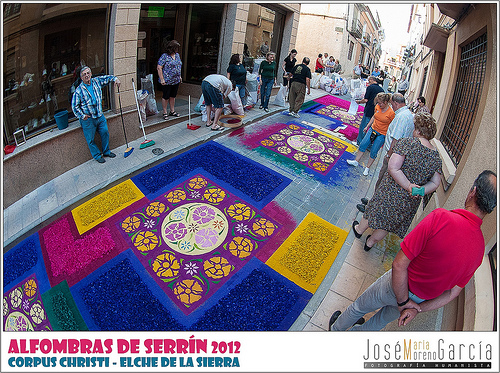
ALFOMBRAS DE SERRIN = ELCHE DE LA SIERRA 2012, by Jose Maria Moreno Garcia, at flickr.com
Every year, this celebration coincides with the Feast of the Corpus Christi. This year, it was held on 21 and 22 June.
The Mayor of Elche de la Sierra has appealed to the province of Albacete, to enjoy this wonderful exhibition of sawdust carpets, in 27 sections of streets and 3 squares in Elche de la Sierra.
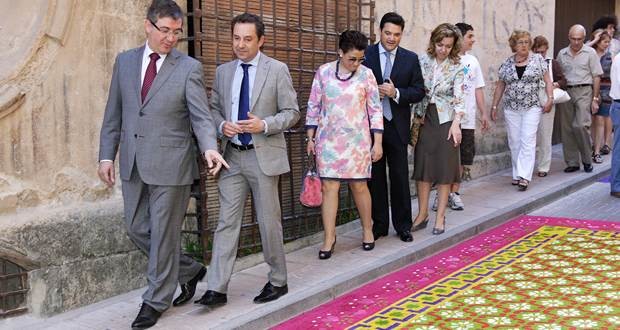
The Mayor of Elche de la Sierra through the streets of the village
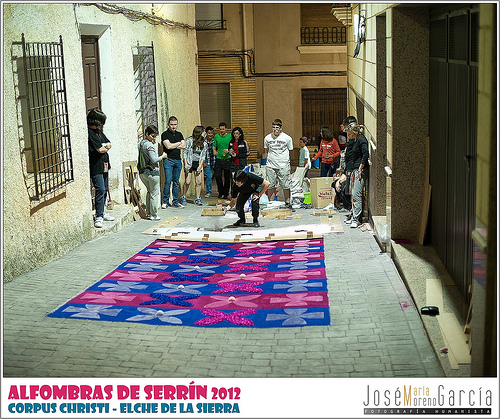
ALFOMBRAS DE SERRIN = ELCHE DE LA SIERRA 2012, by Jose Maria Moreno Garcia, at flickr.com
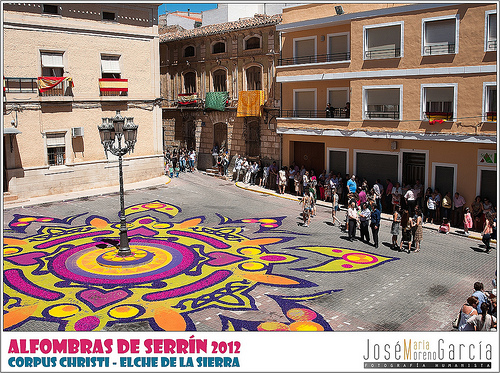
ALFOMBRAS DE SERRIN = ELCHE DE LA SIERRA 2012, by Jose Maria Moreno Garcia, at flickr.com
This year, the programming began, on Saturday morning, with the radio broadcast of the program "It is not just any day" (in National Radio of Spain), from the little theatre of the House of Culture of Elche de la Sierra.
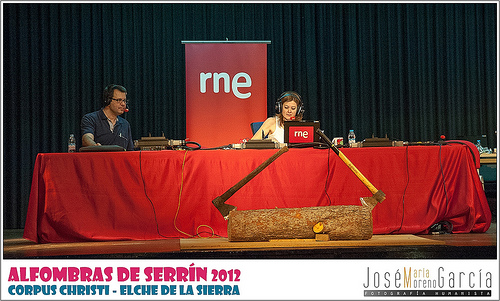
The program "No es un dia cualquiera" in Spanish National Radio (RNE).ALFOMBRAS DE SERRIN = ELCHE DE LA SIERRA, by Jose Maria Moreno Garcia, at flickr.com
Besides the Mayor, are participated: the provincial Deputy Culture, Fermin Gomez; the representative of the Local Action Group Sierra del Segura, Rafael Fernandez and the representative of the Association Friends of the Carpets, Angel Fajardo.
This year has been an international representation of municipalities, that also make carpets, but with flowers. There are 4 groups, who have made their carpets in the Machado Street, in Elche de la Sierra, from San Valentino Torio and Noto (Italy), La Orotava (Tenerife, Southwest Spain) and Japan.
And, yesterday, the cameras of Castuille-La Mancha Tv were present, from 10:30 am, to broadcast, in live, the Eucharist and the procession of Corpus Christi.
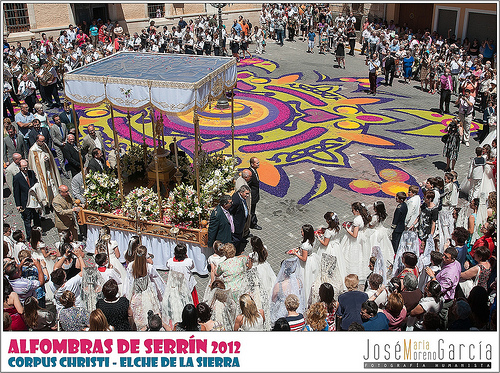
ALFOMBRAS DE SERRIN = ELCHE DE LA SIERRA 2012, by Jose Maria Moreno Garcia, at flickr.com
In this "carpet party", have participated 600 families of the village, who have obtained not only the Declaration of National Tourist Interest, but also the Good of Cultural Interest intangible character.
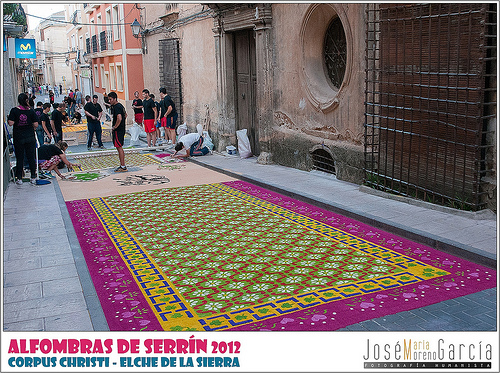
People working on a carpet in street of Elche de la Sierra.ALFOMBRAS DE SERRIN = ELCHE DE LA SIERRA 2012, by Jose Maria Moreno Garcia, at flickr.com
This year, also they will seen these carpets in Rome, at the International Congress of Art, from 26 to June 29.
It seems incredible that they can only create rugs with sawdust ...... And what are nice ....!. I hope that you liked it too, as much as me.
Till soon, kind regards,
Luis.
Sponsored by Costaluz Lawyers.
Please click here below:

 0
Like
Published at 11:18 AM Comments (4)
0
Like
Published at 11:18 AM Comments (4)
Spanish artificial satellite with more resolution
Friday, June 20, 2014
At 21:11 p.m., last night, a Dnepr rocket taking off from the base Yasny, in Russia, with a total of 37 satellites on board, among which was the Deimos 2, the Spanish Earth observation satellite artificial, with higher resolution released to date.

Developed by the company Elecnor Deimos in Puertollano in collaboration with the South Korean company Satrec, the Deimos 2 is able to produce images with a maximum resolution of 75 centimeters, per pixel, from its orbit 620 kilometers high, which allow it to cover more than 150,000 square kilometers of our planet, every day.
Its goal is to obtain data and images for governments and corporations in the areas of agriculture, environment, climate change, crisis management, civil protection, defense, intelligence, and border control.
Deimos 2 will send their data to the ground, by three stations located in Puertollano, Nubik (Canada), and Svalbard (Sweden); procedures are designed so that, whoever has requested images or data from the satellite, can receive them no later than two hours since these have been captured.
The new satellite joins to Deimos 1, which, with a maximum resolution of 22 meters per pixel, has been running since 2009 and it is expected to be in service for at least five years more.
The Deimos 1 is used to aerial larger images, while Deimos 2 may obtain finer details of smaller areas.
With a development cost of about 60 million euros, it is expected to Deimos 2 to function for at least seven years, but if all goes well, it is very likely that, like its predecessor, it last longer than that.
Well, I think that it is very interesting that Spain can participate in the Space Race.
Till soon, kind regards,
Luis.
Sponsored by Costaluz Lawyers.
Please clic here below:

 0
Like
Published at 2:36 PM Comments (0)
0
Like
Published at 2:36 PM Comments (0)
Another Spanish sayings and proverbs 59
Thursday, June 19, 2014
The truth is that I have always heard the expression: "Mucho ruido y pocas nueces" = "Much ado about nothing". However, in a book of sayings, I found the expression: A veces, hacen gran ruido pocas nueces =
Sometimes, they make a great noise about nothing
This expression is said when, seduced by the appearance attribute to something more important than it really is. We found it in the "Book of Good Love" Archpriest of Hita, with these words: "With regret, the old dixome many times: Archpriest, "but the rroydo that nueses " ".

Nueces (Walnuts), by Javier Pais, at flickr.com
Well, I hope that you have liked this post.
Til next time, kind regards,
Luis.
Sponsored by Costaluz Lawyers.
Please click down here:

 0
Like
Published at 10:26 PM Comments (0)
0
Like
Published at 10:26 PM Comments (0)
Spanish anecdotes
Wednesday, June 18, 2014
I have just found in Internet some spanish anecdotes, that they say those are real cases. I hope that you enjoy a while and also you can learn our language on street.
These are the best for me:
One day, a doctor treated a man, who had a medical condition. He went with his wife to the query; she, who was from Galice, explained to the doctor all of her husband´s medical conditions. The doctor considered to the husband and extended a recipe, that put something like: "Drug ............: one pill per day with 2 or 3 cookies ".
As the medicine was very strong, the doctor told her to take it with two or three biscuits, that do not affect much to stomach. It had not even spent 24 hours and the lady was already phoning. This was what she said to the doctor: "My husband holds up to 45 cookies, but from there it is not fall, no way, doctor". Obviously, the doctor should have accented the letter 'o' in his recipe, to avoid misunderstandings, because the lady spent much money to buy several boxes of cookies and insisted on administering 203 cookies to her husband……....Incredible!.
Now I am going to show you some ways to speak in Andalussia and concretely in Cadiz, where you can find a lot of joke. These words are so funny!. Pay attention!.
In Cadiz (here named “Cai”), southern Spain, you can hear talking about “chopped pork” as “soperpó” and even “chopin” –like the famous composer--. And, someone could read, on a shop: “Soper”. It happens something similar that the “corned beef” is named “carneconbí”.
I do not know if you have been in Spain and if you have seen the list of food from a bar….Here I bring you the case of the bar “El caballo negro” (“The black horse”) in Fuengirola (Málaga). There you can read the following list of plates:
--Planshita (it means: a plate of chicken breasts and little pork fillets on a grill).
--Entrecol a la pimienta (it means: “Entrecot a la pimienta” = Sirloin pepper.
--Esgalope de ternera = Escalope de ternera = escalope of veal.
--Sanwchis, changuis, sanguis = sándwich.
--Caramales = calamares = squids.
Another funny thing is that we name, to the “Kleenex”, “Clines” and then, one of them is “a clin”. So, you can say: One clin, 2 clines, 3 clines……..It is funny, is not it?.
Other funny case is which happened in Estepona (Málaga). It is said that a woman went to a shop to pick something up. When she asked what she picked up, she answered that she had to pick up “las zapatillas de la Ignacia”. Of course, when she arrived to the shop, they did not know what she had to pick up and, after some hours thinking about it, they discovered that she needed “Las zapatillas de la gymnasia” (the gym shoes). Incredible!.
Now, I want to tell you about something that happens in Spanish. In English, when you want to say one negation, you say, for example: “He told me nothing” or “He did not tell me anything”. But, in Spanish we should say: “Él no me ha dicho nada” –what literally should be: “He did not tell me nothing”. So, we use two negative parts in the same sentence--. I tell you this case, because I have found, in Internet, an anecdote, that says that two friends were discussing about a matter and, suddenly, one of the friends said: “¡Eso no es casi incomún!” (“That is not almost uncommon”). Then, the other friend told this one: “What a sentence you have invented….., it is a triple denial and, moreover, uncommon word does not exist”; but this friend answered: “How uncommon does not exist……?, well, tell me: What is impossible?”, and the otrer friend answered: “What is not possible”. Then, this friend said with a large smile: “That is right…If Impossible is what is not possible, then Uncommon is what is not common!”.
In La Linea de la Concepción (besides Gibraltar) is typical to ask for a “capotín” (what in Gibraltar is a “cup of tea”).
I thought –and I think that you too— that the unit of measure was the meter; but…now I think I was in a mistake, because in a village of Spain, the unit of measure is “El papelón” (a big paper). Then, you arrive to the shop and say: “Un papelón monyó” and it means that the lady has to start to cut cooked ham and, when you think that it is enough “monyó” (ham from York), you ask the lady to stop of cutting ham.
Well. Many other Spanish anecdotes there are; I will tell you them another day.
I hope that you have enjoyed with these anecdotes.
Till soon, kind regards,
Luis.
Sponsored by Costaluz Lawyers.
Please click here below:

 0
Like
Published at 7:56 PM Comments (0)
0
Like
Published at 7:56 PM Comments (0)
Another Spanish CSIC research on glasses and amber
Tuesday, June 17, 2014
The properties of glasses, at low temperatures, persist for millions of years, according to research by the Higher Council for Scientific Research (CSIC) and the Autonomous University of Madrid, which have analyzed the amber over 110 million years, in the cave of El soplao, in Cantabria.

Sala principal de la cueva El Soplao, Cantabria, North of Spain, by Victor Gomez, at flickr.com
Thus, the study, published in Physical Review Letters, explains that while the glass is known for years, its nature is one of the most controversial issues of physics. In the investigation have been studied amber samples from this cave, of which formation dates back to the Cretaceous and which have undergone a process of aging and thermodynamic stabilization.
Specifically, at the Institute of Materials Science, CSIC, in Madrid, has been made analyzing speed of sound through Brillouin spectroscopy, a method that allows to obtain information through the interaction among light and matter. With this technique, scientists have come to know the evolution of the studied specimens with temperature.
Meanwhile, in the low temperature laboratory at the Autonomous University have been characterized the thermodynamic properties. The experiments, according to the CSIC, have enabled experts to prove that the two most important and pervasive characteristics of solid glassy at low temperatures (the presence of systems of tunneling of two levels and the so-called 'boson peak') remain unchanged essential for these highly stabilized, in contrast to what was generally believed, during the last 40 years.
"While glass is known for thousands of years, from the point of view of physics, its nature is one of the most controversial issues for decades", says Rafael J. Jimenez Riobóo, from the Institute of Materials Science, which stressed that amber can be "a key" to shed light on this controversy, because its thermal history can be manipulated, and you can get an amber "rejuvenated" and take it again its glassy state.
Amber is a fossilized tree resin, produced from exudates of coniferous or angiosperms. Over time this resin undergoes maturation during which a progressive polymerization occurs, among other processes, and after long periods of time, which in some cases may exceed one hundred million years, it is fossilized.
This transformation in amber glasses is which was produced, at the site of the Soplao. Amber is a very important material for a Paleontology, since it is a unique preservation of very old bio-plant and animal inclusions, trapped in the viscous resin and then were fossilized, millions of years ago.
So, other amber deposits worldwide and with different chemical compositions or amber have proved invaluable, for the reconstruction of ecosystems and prehistoric life.
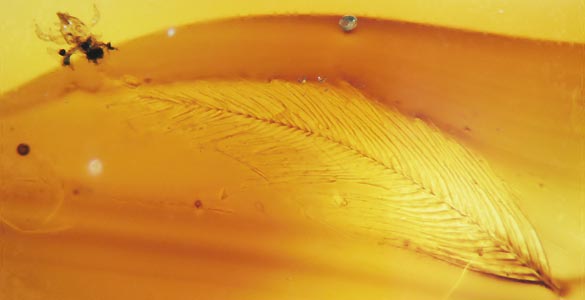
A feather preserved in amber
According to the researchers, this material could also become a useful model to elucidate many other puzzles, that continue to drive research the physics of glassy state, much unknown and discussed than relating to the crystalline state.
Finally, they say that for physics and chemistry, amber is a unique example of a glass that has aged, for a long time, below its glass transition temperature, reaching a state that is not accessible under normal experimental conditions.
Well, I think this is a very interesting project. I hope that you have liked too.
Till nex time, kind regards,
Luis.
Sponsored by Costaluz Lawyers.
Please click here below:

 0
Like
Published at 12:19 PM Comments (0)
0
Like
Published at 12:19 PM Comments (0)
Geothermal energy in Spain
Thursday, June 12, 2014
A study by the University of Valladolid (Northwestern Madrid, Spain) said that geothermal energy can quintuple the current energy.
Researchers at the University of Valladolid have estimated how much electricity could be obtained with the heat stored underground, the first ten miles of the mainland. The results indicate that about 700 gigawatts, which is five times the entire installed capacity today. Galicia, Castilla y Leon, Andalusia and Catalonia are the regions with the greatest potential.
The temperature increases by 30 ° C per kilometer descended underground. This thermal gradient generated by the flow of heat from inside the Earth and the decay of radioactive elements in the crust, produces geothermal energy. About 500 plants around the world and used to generate electricity, but in Spain there is still none.
However, the basement of the Iberian Peninsula has capacity to produce up to 700 gigawatts, if this resource with stimulated geothermal systems were exploited (EGS, for its acronym in English) between 3 and 10 km depth, where temperatures exceed 150 ° C . This is confirmed by a study that engineers at the University of Valladolid (Grape) published in the journal Renewable Energy.
"Then, the heated fluid is brought up to the geothermal power plant, where electricity is produced, generally by a binary cycle (heat exchange among water and an organic liquid), and it is re-injected into the reservoir in a closed loop" .
Although there are EGS experimental stations in countries like USA., Australia and Japan, there is only one connected to the network: the Soultz-sous-Forêts in France. The rest of the current geothermal plants are in the few areas of the Earth, where thermal anomalies and the presence of hot water at shallow depths occur, as in Iceland.

Geothermal power plant of Nesjavellir, Iceland
"However, the EGS resources are distributed widely and evenly, so the potential is huge and could provide a significant power in the medium to long term, constantly 24 hours a day", says Chamorro, comparing: "The 700 GW electric, indicating the study, represent approximately five times the current installed power in Spain, if we add that of fossil fuels, nuclear and renewable".
"Even if we limit the calculation to 7 km deep, --he adds--, the potential reaches 190 GW; and among 3 and 5 km would be 30 GW”. All these data refer to called 'technical potential', which is a cooling (by water) of 10 º C in rocks, that are at least 150 ° C to remove a fraction of energy exploitation for a period of 30 years.
There is another potential, renewable or sustainable, it only considers the electrical energy that could be obtained if the heat flux at the rate reaches the cortex from inside the Earth exploited. This value is significantly lower, and in the case of Spain is estimated at 3.2 GW. "It seems few, but is the equivalent of three nuclear power plants", said the engineer, who notes that the limit of installable power would be an intermediate value among technical potential and renewable.
According to the study, the regions where higher temperatures at shallower depths are reached, and therefore more susceptible geothermal potential and more detailed studies for development are Galicia, Castilla y Leon West, Central System, Andalusia and Catalonia.
The reason is that in the subsoil there is more friction between the base plate and the presence of granitic materials. The results are a reference to regional scale, so installing a goetérmica plant in a particular location would require more detailed studies.
To estimate the temperatures at different depths (from 3,500 m to 9,500 m deep) researchers have left from heat flux and temperatures at 1,000 m and 2,000 m, offering the Atlas of Geothermal Resources in Europe, as well as the thermal data land surface, that NASA facilitates.
With this same information, applied to Europe, researchers have published another study in the journal Energy, where they compare the potential of each country. Turkey, Iceland and France are those with the greatest potential. Overall, the technical potential of the continent exceeds 6500 GW electric.
Respect the implementation of EGS technology, the authors acknowledge that there are still important issues to investigate, as appropriate drilling techniques, the best way to fracture the rock or how to operate advanced thermodynamic cycles.
"But when you resolve them, it will pass from the technical feasibility achieved today to the economic viability, to allow its commercial exploitation", said Chamorro. According to a report by the Massachusetts Institute of Technology (MIT), with adequate investment in R & D, in 2050 they could be installed 100 GW electric, with this technology, in the USA.
"In the case of Spain, the EGS systems could also have a significant contribution to the national energy mix, reducing dependence on foreign energy and reducing emissions of greenhouse gases", says the engineer.
Well, I think this is a very interestin project. I hope that you have liked too.
Till soon, kind regards,
Luis.
Sponsored by Costaluz Lawyers.
Please click here below:

 1
Like
Published at 11:37 AM Comments (0)
1
Like
Published at 11:37 AM Comments (0)
An invention created for road safety in Spain
Tuesday, June 10, 2014
In early May, there was a tragic accident between a minibus --with young people-- and a backhoe, in Badajoz, Extremadura, southwest of Madrid. Died 5 young people. Recalling the sad news, I thought it would be interesting to show you a new Spanish invention, for more security on buses.
A team, at the Polytechnic University of Valencia, has developed a safety system for buses, in order to reduce the number of accidents caused by blind spots and blind spots in the vision of the driver.
It is part of a project called SAFEBUS (Safe Bus), promoted by the Ministry of Economy and Competitiveness.
This phenomenon of the blind spots of vision occurs due to the location of the mirrors and make sometimes dangerous situations and accidents, both when the vehicle is in gear and when in stop, especially if there are children around.
This device, developed together with the company C-Robots has passed tests and it is installed in a couple of buses fleets in the region; it is thought mainly for school buses.
The main problem, that the invention seeks to solve is hit and run at bus stops, where the view on the left side (or even right) may be limited.
The system warns the driver of potential problem with audible and visual signals. But if the hazard is not resolved, you can even block the movement of the vehicle disabling the throttle or steering wheel.
Technically the invention consist of some stereo vision cameras, an information screen next to the steering wheel and an advanced recognition software people. When the presence of people is detected, thanks to those cameras, the system acts, showing the signs or taking control of the vehicle to stop.
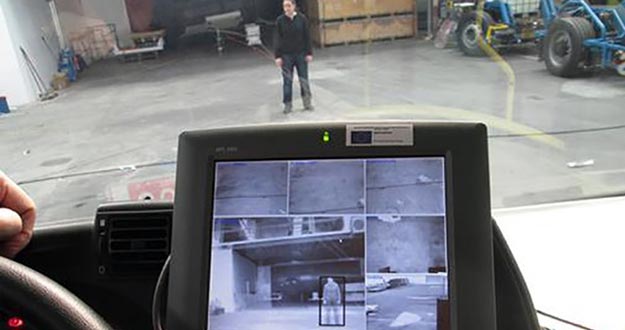
The SAFEBUS in Valencia, eastern Spain
The way these artificial vision systems learn to recognize objects, requires some training. In this case they acted with buses to collect visual data on aspect of more than 12,000 pedestrians, travelling along the city streets, taking however, in the perspective of cameras.
The filming of the videos was done in high traffic locations including train stations, schools and university of Valencia itself.
Well, I think this project is very interesting and I hope it can work in another countries.
Till soon, kind regards,
Luis.
Sponsored by Costaluz Lawyers.
Please click here below:

 0
Like
Published at 10:48 AM Comments (0)
0
Like
Published at 10:48 AM Comments (0)
Papas con choco from the Southern Spain
Monday, June 9, 2014
Today I bring you a typical recipe from the province of Cadiz (south western Spain) --althought it is also cooked in another provinces--.
The dish is named "Potatoes with cuttlefish" and you have not confuse cuttlefish with squid.
These are the Ingredients for 4 persons: 2 medium cuttlefishes, 5 medium potatoes, 1 green pepper, 1 onion, 2 cloves of garlic, 1 bay leaf, saffron, 1 glass of dry sherry and salt.
To cook this dish you will need spend one hour and a quarter.
The first thing we will do is clean the cuttlefish well and cut into three square feet, more or less. In a pot, we shall pour the onion, sliced thin, with a generous drizzle of olive oil; when poached is well, add the minced garlic and chopped green pepper and onion. When the vegetables are very tender, add the cuttlefish, along with the glass of wine; cook until the cuttlefish is tender. Meanwhile, peel the potatoes and cut them into cubes of about two fingers thick. When cuttlefish is ready, add the potatoes to the pot with the bay leaves and saffron; cover with water and cook over medium heat until potatoes are tender. Finally, add salt to taste.
Now, you have to put everything on a plate. So, you have to divide the stew into four bowls and garnish the top with a few strands of saffron and bay leaves.
And this one must be the result:

Papas con choco, by Antonio Gonzalez Garcia, at flickr.com
I hope that you try to cook this dish and tell me if you have liked.
Have a good appetite!.
Till soon, kind regards,
Luis.
Sponsored by Costaluz Lawyers.
Please click here below:

 0
Like
Published at 11:48 AM Comments (0)
0
Like
Published at 11:48 AM Comments (0)
Another Spanish sayings and proverbs 58
Sunday, June 8, 2014
These days, it is talking a lot in Spain, about the Abdication of our King, Juan Carlos I. So, I thought that this saying could come in handy at this time. The proverb is the following:
A tu rey y a tu nacion, el alma y el corazón
It means that patriotism is imperative for all well-born self-respecting duty. So it was believed, too, flatly, by the illustrious political Canovas del Castillo, while, according to that feeling, even he said: "With the homeland you are, rightly or wrongly, on every occasion".
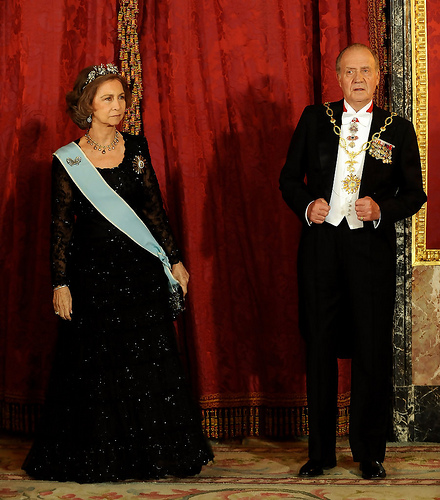
The King, Juan Carlos I, and the Queen Sofía, by Carlos Alvarez, at flickr.com
Well, I hope that you think this saying is interesting.
Till soon, kind regards,
Luis.
Sponsored by Costaluz Lawyers.
Please click here below:

 0
Like
Published at 12:14 AM Comments (0)
0
Like
Published at 12:14 AM Comments (0)
The electricity production in Spain
Friday, June 6, 2014
Today I bring you a very interesting video about the electricity production in Spain. If you want to watch this video, please click here below:
http://www.rtve.es/alacarta/videos/telediario/42-toda-produccion-electrica-espana-2013-fue-origen-sostenible/2585156/
RENEWABLE POWER: Ana Blanco: “We speak now of energy production, which has increased in Spain, renewable energy, much in the last years...... In 2013, the 42 percent of all electricity production was sustainably sourced and so far this year more than half. Looking ahead, the expert and the European Union itself placed to our country as one of the leading exporters of clean energy”.
UNTAPPED RESOURCES: “Not only for the power that we have installed, but by the potential resource that we still have untapped --and I speak of Spain and speak of Portugal--, we are called to be the field of renewable energies in Europe 2030 and 2050”
ALDEADAVILA TURNS 50 YEARS: Ana Blanco: “The most veteran of these energies is the hydraulics, which doubled its production last year. The Central Aldadávila, in Salamanca, is the most important of Spain; it just turned 50 years, taking advantage electric, with the passage of the Duero”.
HYDRAULIC FUTURE: Voice in off: “From a distance, no pressure, no more when we enter the guts of the Hydroelectric Plant of Aldeadavila. Twelve kilometers of tunnels, cut into the stone, more than half a century ago. Aldeadavila work is the most important Hydraulic Engineering work of Spain: it produces the 12 percent of all the national hydroelectric load”
Juan Antonio Lopez (IBERDROLA PRODUCTION MANAGER AT CENTRAL ALDEADAVILA (SALAMANCA): “Where it is really generated is here, in the Central, where the machines are. What water does is drive the turbine; the turbine has a shaft, which drives an alternator, which is where power is generated”
Voice in off: “We entered the turbines hall, six in total and a combined capacity of 1,275 megawatts, or what is the same: to supply 250,000 homes in a year”
Juan Antonio Lopez: “Below us, it is passing the water through a pipe of 4 meters in diameter, and it is moving the turbine, which is on the bottom. This machine, right now, is giving an output of 100 megawatts. What makes the water is pushing these blades, and it is what makes this whole turn piece”.
Andres Seco (Network Operations Manager of Spanish Electric Network): “Hydraulics has the ability to regulate, almost in real-time, the production: it may be giving you, right now, 200 megawatts, and, in a matter of less than 4 seconds, move to give 10".
Voice in off: “Electricity can not be stored, occurs as a function of demand, which varies with consumption peaks at 12 noon and 10pm .... In Spain there are about 800 hydroelectric power stations, the vast most small dams, for own consumption; 10, as Aldeadavila, exceeds 200 megawatts, for a general supply”
Ramón del Puy (Hydrographic Basin of the Duero Manager): “These facilities are renewed constantly a large and costly investments are made to adapt to new technologies and to continue to function properly and safely”
Voice in off: “Aldeadavila reservoir has a height of 140 meters, a width of 250 meters. Here in the reservoir, they are stored 115 million cubic meters of water: a similar capacity than 97 football fields. Last year, the hydraulic assembly and production of renewable (wind and water, mainly) has skyrocketed doubled, from 35% in 2012 to more than half, this year. All the power system is controlled from here, national and what is exported, according to Red Electrica of Spain, a small part of what can occur”
Andres Seco: “We are called to be the field of renewable energies in Europe 2030 and 2050. What is the bottleneck ...? .. But… the interconnection…… the interconnection with France”
Voice in off: “Later this year, it will launch a new interconnection, which will reach 3,000 megawatts ...., still far from the 15,000 that designed the European Commission”.
Well, here the video has finished. I hope that you have liked.
Till soon, kind regards,
Luis.
Sponsored by Costaluz Lawyers.
Please click here below:

 0
Like
Published at 9:14 PM Comments (0)
0
Like
Published at 9:14 PM Comments (0)
El Hierro: The island of the world start in Spain
Friday, June 6, 2014
Each June 5, we have an unavoidable meeting with the planet, we all celebrate the World Environment Day. This year, the Program of the United Nations Environment (UNEP) is set in the most fragile and exposed territories and coined the slogan "Small islands and Climate Change". In the Canary Islands, we just find an island that serves as an example to demonstrate the efforts of these communities to safeguard its rich cultural heritage, its magnificent biodiversity and ecosystem located in a setting of breathtaking views: the island of El Hierro.
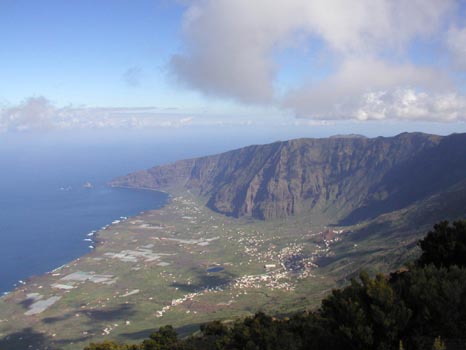
In the western and southern end of the Canary Islands, El Hierro is the smallest and youngest island from a geological point of view. Its remoteness, small population and limited tourist infrastructure, encouraged from the Island Council itself, have led to this island comes to today with Primal still able to transmit as few natural volcanic force of his appearance. A catalog of incredible scenic beauty and well preserved and unique spaces in conviertieron Biosphere Reserve by UNESCO in 2000, now adds a new environmental incentive to become a model of energy self-sufficiency.
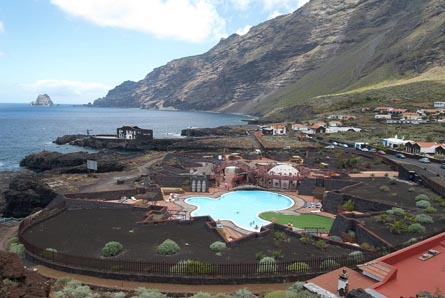
In late June, from the center of Wind Gorona, El Hierro will produce 100% of its electricity from renewable sources with the setting up of a Central hydro-wind power will generate more than 11 megawatts and will be able to supply all consumption demanded by its inhabitants and infrastructure, including the three desalination responsible for providing them potable water. On the horizon include, among other things, that mobility throughout the island is electric. El Hierro is a prototype of all sustainable development and a mirror and other islands, small island states and communities around the world, some of which have already traveled there to take example of his innovative solution look.
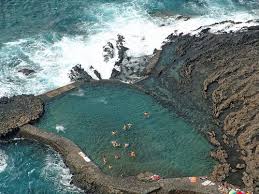 

Well, I hope that you want to enjoy this island personally.
Till soon, kind regards,
Luis.
Sponsored by Costaluz Lawyers.
Please click here below:

 0
Like
Published at 12:57 AM Comments (0)
0
Like
Published at 12:57 AM Comments (0)
Cornea transplants in Spain
Thursday, June 5, 2014
Spain remains world leader in transplantation and this year have increased by 4.6%, over the same period of 2013.
Here I bring you a video, where it is explained the transplants of Cornea, in Spain. If you want to watch the video, please click here below:
http://www.rtve.es/alacarta/videos/noticias/trasplantes-cornea-se-han-duplicado-espana-ultimos-veinte-anos/2596184/
Voice in off: “For Philip, his cornea is worth as a diamond. He had 30% of vision, in his right eye, until it was transplanted 6 years ago”.
Felipe Llanes (he has regained vision): “I was 10, 14 years putting up and, in the past 6, I have forgotten that I have a problem in the eye ..., just only when I come by here to review”.
Voice in off: “In 20 years, cornea transplants has doubled. From 90 add 6o.ooo interventions”
Jose Manuel Benitez del Castillo (Ocular Surface Unit, “San Carlos” Hospital): “If the disease is affecting the cornea and the transplant goes well and the astigmatism is corrected and there is no rejection, the patient can recover 100% vision”.
Voice in off: “To get them, there is a network of 112 centers, as this bank of Cordoba: here they analyze the tissue to see if it is suitable for transplantation. For the donor, the requirements are lower than in other cases”
Rafael Villalba (Responsible Tissue Bank of Cordoba): “There are some causes of death, which would exclude organ donation. In the case of the cornea, being a vascular tissue, i.e. tissue which has less risk of transmitting certain type of pathology, it would also be perfectly valid”.
Voice in off: “Therefore, the National Transplant Organization recalled that the cornea donations are still needed”
Rafael Matesanz (President of the National Organization of Transplants): “Stem cells are also used in the treatment of these corneal injuries; but, today, the standard treatment is really ..... cornea transplant”
Voice in off: “Only in 2013, 2600 people donated their corneas”
Well, I hope that you have liked this video, where you can see that, in Spain, there are very good researchers.
Till soon, kind regards,
Luis.
Sponsored by Costaluz Lawyers.
Please click here below:

 0
Like
Published at 12:30 AM Comments (0)
0
Like
Published at 12:30 AM Comments (0)
Spam post or Abuse? Please let us know
|
|